What is Generative AI? Everything You Need to Know
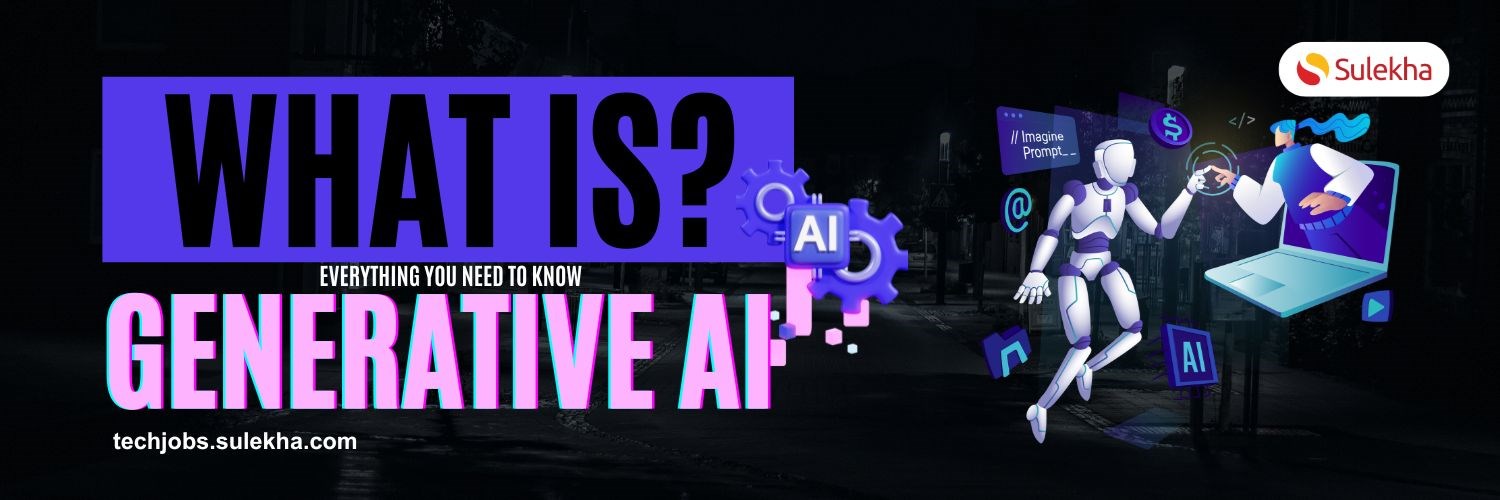
Generative AI is not just a career path; it's a gateway to a future where innovation and creativity intersect. This blog uncovers why generative AI is not just a career but a pathway to shaping the future of work.
What is generative AI?
Unlike AI technology, generative AI also is a type that comes under it. Generative AI has the capability of producing all types of content including images, text, audio, music, and synthetic data (which means Synthetic data is computer-generated information used to train AI models or protect real data privacy). Imagine it as a super powerful copywriter, artist, or musician who can produce new things based on what it's learned. Moreover, it can identify patterns and relationships within the data, the AI learns the underlying structures and can then use that knowledge to create new, original content.
Market Growth:
• The global AI market is booming, valued at over $454 billion in 2022
• North America leads the pack with a market size of $167.3 billion.
• Generative AI is a key driver of this growth, with McKinsey projecting an economic impact of $6.1-7.9 trillion annually.
• Gartner reports a surge in generative AI adoption: half of surveyed organizations increased investment in the last 10 months, with 44% piloting and 10% already in production (up from just 15% and 4% in early 2023).
Purpose of Generative AI
• The Generative AI used for movie dubbing
• Aid in generating rich educational-based content
• It is used to identify deepfakes videos and images
• Generative AI mainstream is transformers, which is a type of machine learning prominently used for researchers to train large amounts of data, chemicals, DNA, etc.
• Another streamline is New models, used to train billions of text pages.
• LLMs provide the core understanding of language needed by generative AI to create human-like and coherent new content.
• Multimodal AI combines information from different senses (text, images, audio) to create a richer understanding and intelligent outputs.
• Dall-E automatically creates images from text.
• Generative AI is used in technology for writing code, creating new drugs, developing products, redesigning business processes, and transforming supply chains.
How does generative AI work?
We can use generative AI with a prompt. It can be in any form- text, video, image, or any manner that AI can process.
In the past, early iterations of generative AI necessitated sending data through an API or a complex procedure. Developers had to become acquainted with specific tools and create applications using programming languages like Python.
Generative AI models
Generative AI models: VAEs, GANs, diffusion, transformers, and NeRFs combine multiple algorithms to produce informative and unique content.
For example,
If you intend to generate text, natural language processing techniques are utilized to dissect and understand human language. This empowers the AI to not only create grammatically correct text, but also generate content that is stylistically appropriate, semantically relevant, and even creative.
In image, Generative AI models are used in image generation by training deep neural networks on large datasets of images. These models learn to recognize patterns and relationships within the images, allowing them to generate new images that are similar in style and content to the training data. The models can be fine-tuned to focus on specific subjects or styles, such as generating images of a particular type of car or in a specific artistic style. Once trained, the models can be used to generate new images in response to text prompts or other input, making them useful for applications such as content creation and data augmentation.
GANs (Generative Adversarial Networks) and VAEs (Variational Autoencoders) are both used in generative AI:
• GANs pit two neural networks against each other, one creating new data and the other critiquing it, leading to increasingly realistic outputs.
• VAEs compress data into a latent space and then try to recreate it, allowing them to generate new variations based on the learned patterns
While BERT, GPT, and AlphaFold aren't directly neural networks themselves, they all leverage a powerful architecture called transformers, which are a type of neural network. These models achieve impressive results in their respective fields (language, protein structure) due to the transformer's ability to learn complex relationships within data.
What are Dall-E, ChatGPT and Bard?
Dall-E, ChatGPT, and Bard are all large language models (LLMs), but each with a specific focus:
• DALL-E (by OpenAI): This is a text-to-image AI model. You give it a description in the text, and it generates a corresponding image.
• ChatGPT (by OpenAI): This is a text-based LLM. It excels at generating text formats like poems, code, scripts, musical pieces, and more.
• Bard (by Google): It is also a text-based LLM and its strengths lie in understanding and responding to your questions in an informative way and generating different creative text formats.
While ChatGPT and Bard are similar in text-based functionalities, DALL-E stands out for its ability to generate images from descriptions.
What are the use cases for generative AI?
Generative AI can be used to derive unique any manner of content. This technology is accessible to users from banking to education to technology. It has been profiled on all our desktops like GPT. Some of the use cases for generative AI include the following:
• Generating text, images, and videos autonomously.
• Delivering tailored experiences and communications to users.
• Accelerating software development with code suggestions.
• Creating financial reports and summaries automatically.
• Generating synthetic data to enhance machine learning models.
• Improving logistics and reducing costs through scenario evaluation.
• Enhancing chatbots and virtual assistants with more natural and engaging responses.
• Creating synthetic medical images for training and research purposes in healthcare.
What are the advantages of generative AI?
The advantages of generative AI include:
• Increased Efficiency
• Improved Quality
• Faster Results
• Cost Savings
• Improved Decision Making
• Automation and Innovation in Content Generation
• Enhanced Customer Experience through Personalization
• Optimization of Productivity and Creativity
• Hyper-personalization of Customer Experiences
• Automation of Complex and Time-consuming Processes
What are the disadvantages of generative AI?
Generative AI, while powerful, comes with its own set of drawbacks:
• Bias and Fairness
• Deepfakes and Misinformation
• Job Displacement
• Lack of Control and Explainability
• Data Security and Privacy
• Environmental Impact
Common concerns of generative AI
1. Generative AI models can be used to automatically generate content that contains offensive language, biases, or harmful guidance, which could negatively impact individuals or an organization's brand.
2. Generative AI can be misused to create synthetic media like deepfakes, phishing attacks, and other malicious content.
3. Workforce Disruption: The adoption of generative AI may lead to job displacement and the need for worker retraining, impacting workforce morale.
4. Compliance and Regulatory Challenges: The use of generative AI may raise issues around data governance, security, and compliance with regulations like GDPR.
What are some examples of generative AI tools?
Generative AI tools are available for a wide range of modalities, including text, imagery, music, code, and voices. Some popular AI content generators are:
Text generation tools include
1. ChatGPT
2. Jasper AI
3. Copy.ai
Image generation tools
1. DALL-E 3 by OpenAI
2. ImageFX by Google
3. DreamStudio by Stability AI
4. Midjourney
Music generation tools
1. AudioCraft by Meta
2. MuseNet by OpenAI
3. iZotope's AI assistants
Code generation tools
1. GitHub Copilot (by OpenAI & Microsoft)
2. TabNine
3. DeepCode (by Intel)
4. AlphaCode (by DeepMind)
Voice synthesis tools
1. ElevenLabs
2. Murf.ai
3. Synthesia
AI chip design tools
1. Synopsys
2. Cadence
3. Google
4. Nvidia
Generative AI by industry
The industries that utilize Generative AI include pharmaceutical, manufacturing, media, architecture, interior design, engineering, automotive, aerospace, defense, medical, electronics, and energy industries. Generative AI is expected to impact various sectors such as marketing, design, corporate communications, training, and software engineering by augmenting supporting processes.
1. Pharmaceutical Industry: Generative AI is transitioning from hype to reality in the pharmaceutical sector, revolutionizing drug discovery and development processes.
2. Finance Industry: Generative AI enables faster and deeper insights into finance, aiding in risk management, compliance, and decision-making processes.
3. Banking Industry: Generative AI supports banks in managing risk, compliance, and customer interactions, enhancing operational efficiency and customer service.
4. Healthcare Industry: Generative AI addresses significant challenges in healthcare, offering innovative solutions for patient care, research, and treatment optimization.
5. Media and Entertainment Industry: Generative AI is used in generating visual content and short-form media, enhancing creativity and efficiency in content production.
6. Architecture and Interior Design Industry: It offers innovative design ideas, and enhances creativity in creating architectural and interior spaces.
Generative AI vs. AI
1. Generative AI is a subset of AI that focuses on creating new content, such as images, text, or music, based on patterns and data it has been trained on. Generative AI relies on neural network techniques such as transformers, GANs, and VAEs.
2. AI, in general, refers to technologies that can perform tasks that normally require human intelligence, such as learning, problem-solving, and decision-making, and encompasses a wide range of applications beyond just generative capabilities. AI techniques include convolutional neural networks, recurrent neural networks, and reinforcement learning.
Generative AI vs. predictive AI vs. conversational AI
Here are the key differences between generative AI, predictive AI, and conversational AI in 3 points:
Generative AI: Creates novel content like text, images, and music autonomously.
Predictive AI: Forecasts future trends and outcomes based on data patterns.
Conversational AI: Understands and responds to human language naturally.
Future of Generative AI
The future of generative AI is expected to be shaped by advancements in multimodality, AI as a Service, and the pursuit of Artificial General Intelligence (AGI). This technology is projected to significantly impact various industries, including energy and materials, real estate, life sciences, high tech, and banking. Generative AI is expected to enhance productivity and efficiency, potentially adding up to $4.4 trillion to the global economy annually. However, concerns surrounding the technology include issues with accuracy, bias, and potential misuse.
Generative AI is a transformative field within artificial intelligence that focuses on creating models capable of generating new content resembling the input data they were trained on. This technology has broad applications, from enhancing creativity in art and entertainment to generating synthetic data for training purposes. As generative AI continues to evolve, its potential impact across industries and society is profound, opening doors to new possibilities and innovations.
Find a course provider to learn Artificial Intelligence Engineer
Java training | J2EE training | J2EE Jboss training | Apache JMeter trainingTake the next step towards your professional goals in Artificial Intelligence Engineer
Don't hesitate to talk with our course advisor right now
Receive a call
Contact NowMake a call
+1-732-338-7323Enroll for the next batch
Artificial Intelligence Engineer
- Dec 8 2025
- Online
Artificial Intelligence Engineer
- Dec 9 2025
- Online
Artificial Intelligence Engineer
- Dec 10 2025
- Online
Artificial Intelligence Engineer
- Dec 11 2025
- Online
Artificial Intelligence Engineer
- Dec 12 2025
- Online
Related blogs on Artificial Intelligence Engineer to learn more

Artificial Intelligence – A Growing Field of Study for Modern Learners
Artificial Intelligence is becoming a top study choice due to high job demand and future scope. This blog explains key subjects, career opportunities, and a simple AI study roadmap to help beginners start learning and build a strong career in the AI

Train Like an AI Engineer: The Smartest Career Move You’ll Make This Year!
Why AI Engineering Is the Hottest Skillset Right Now From self-driving cars to chatbots that sound eerily human, Artificial Intelligence is no longer science fiction — it’s the backbone of modern tech. And guess what? Companies across the USA and Can
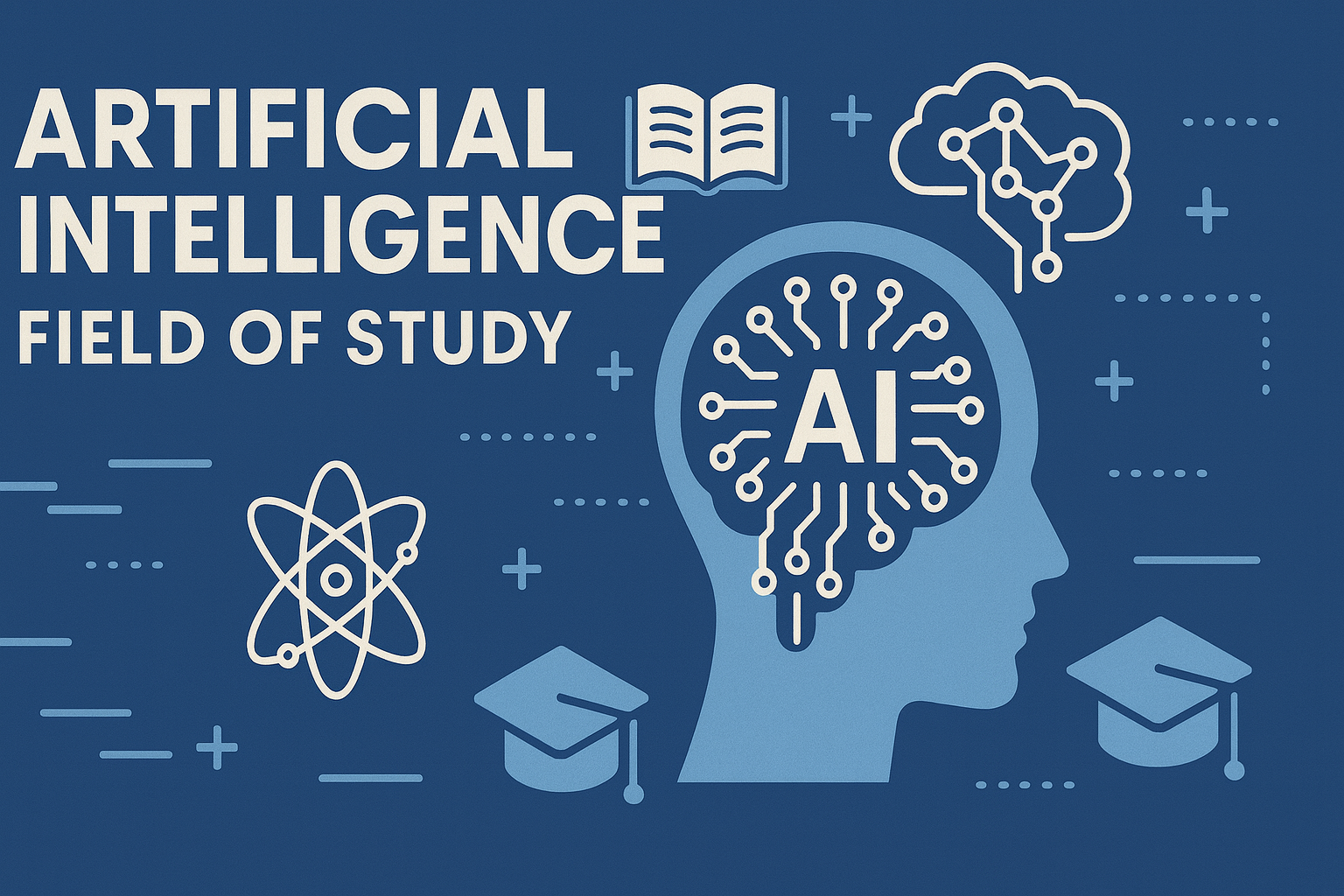
Artificial Intelligence – Field of Study
Explore how Artificial Intelligence blends Machine Learning, Deep Learning, NLP, and Computer Vision to build intelligent systems that learn, reason, and decide. Discover real world applications, ethics, and booming career scope as AI education deman
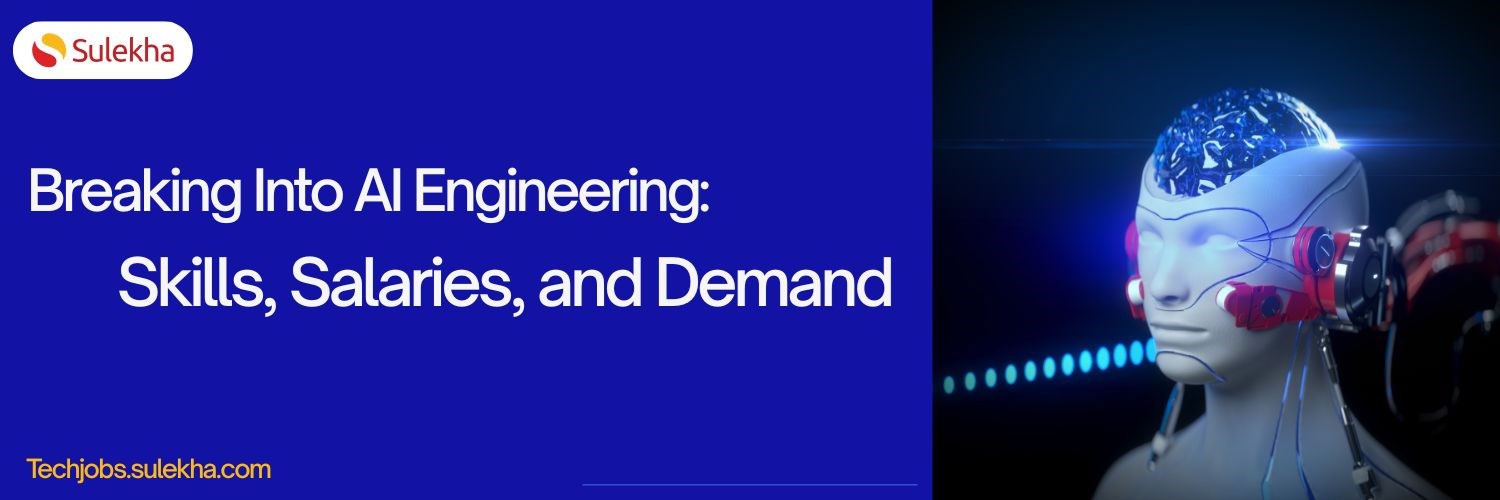
Breaking Into AI Engineering: Skills, Salaries, and Demand in the US
Discover how to break into AI engineering with insights on essential skills, salary expectations, and rising demand in the US. Learn about career paths, certifications, and how to succeed in one of tech’s fastest-growing fields.
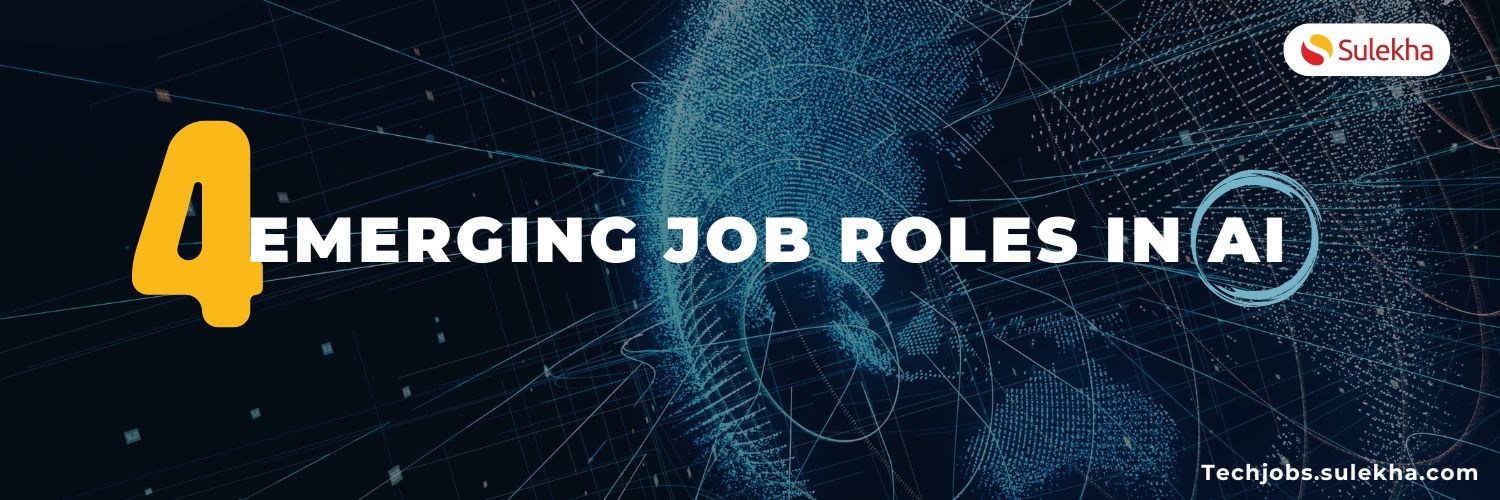
Top Four emerging job roles in AI
Explore four emerging AI job roles including AI ethicist, trainer, interaction designer, and safety engineer, each shaping the future of ethical and secure AI technology. Learn about their responsibilities and the essential skills required in this ev
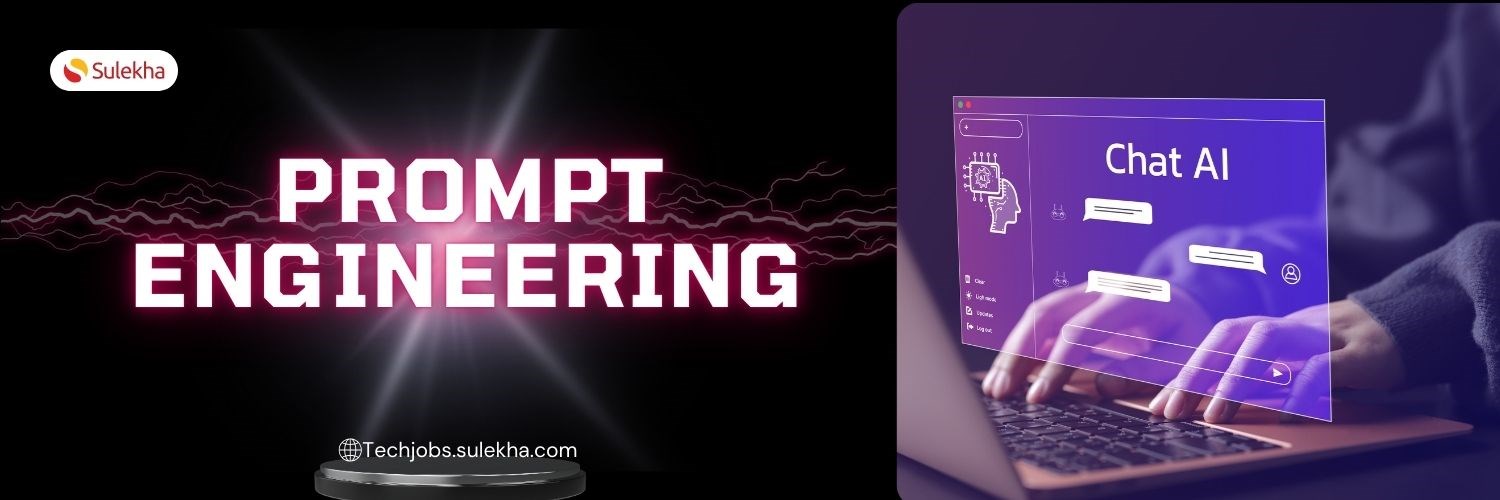
Prompt Engineering
We have discussed comprehensive entitles of what is prompt engineering, types of prompts, element and method of prompt engineering, and application of prompt engineering in-detail.

5 AI Trends to Watch in 2024
Discover the top 5 AI trends that will shape the future in 2024, from advancements in natural language processing to the growing impact of AI on healthcare and beyond.
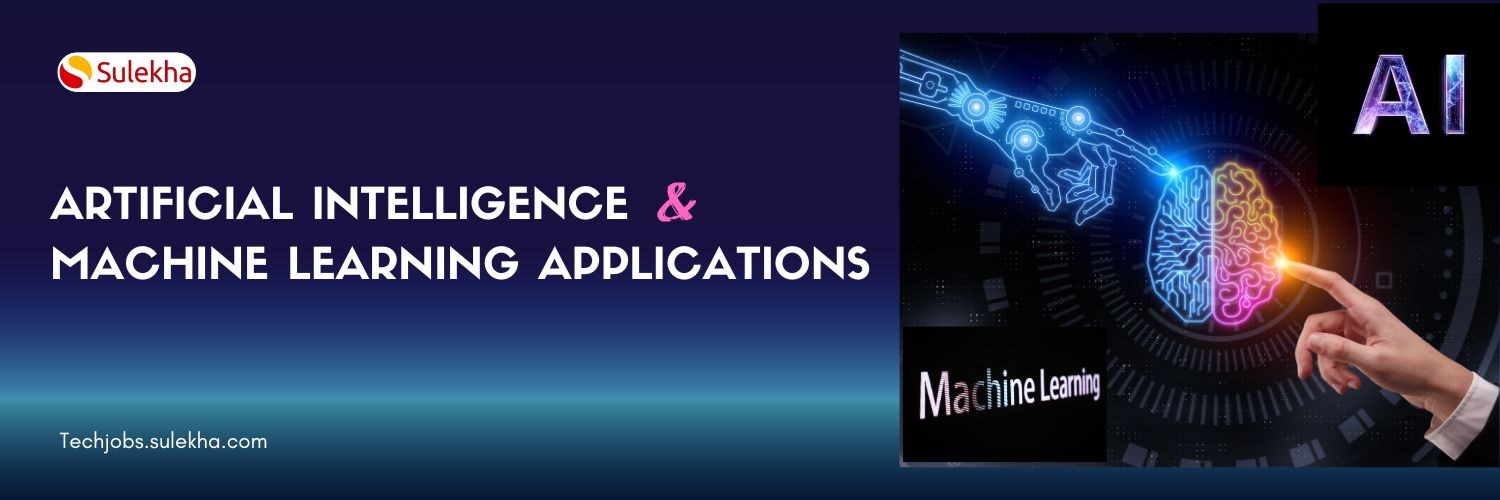
Artificial Intelligence and Machine Learning applications
Discover the vast applications of Artificial Intelligence (AI) and Machine Learning (ML) across various industries, from healthcare to finance, and learn how these technologies are transforming the way we live and work.
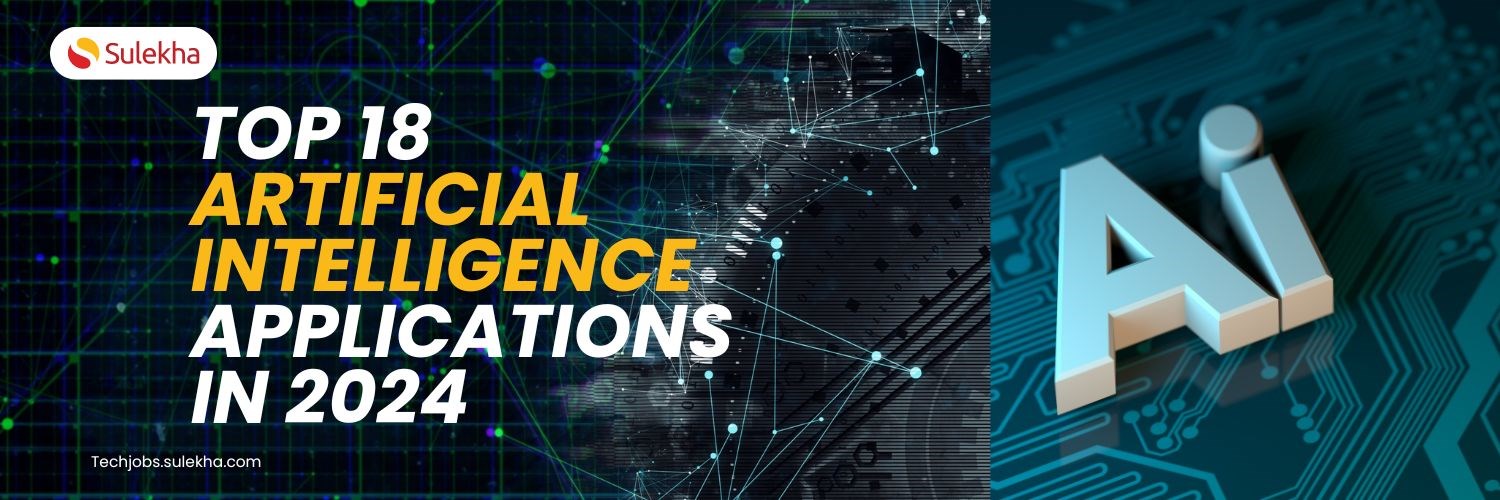
Top 18 Artificial Intelligence Applications in 2024
Explore the diverse applications of machine learning in various industries, including healthcare, finance, retail, and transportation.
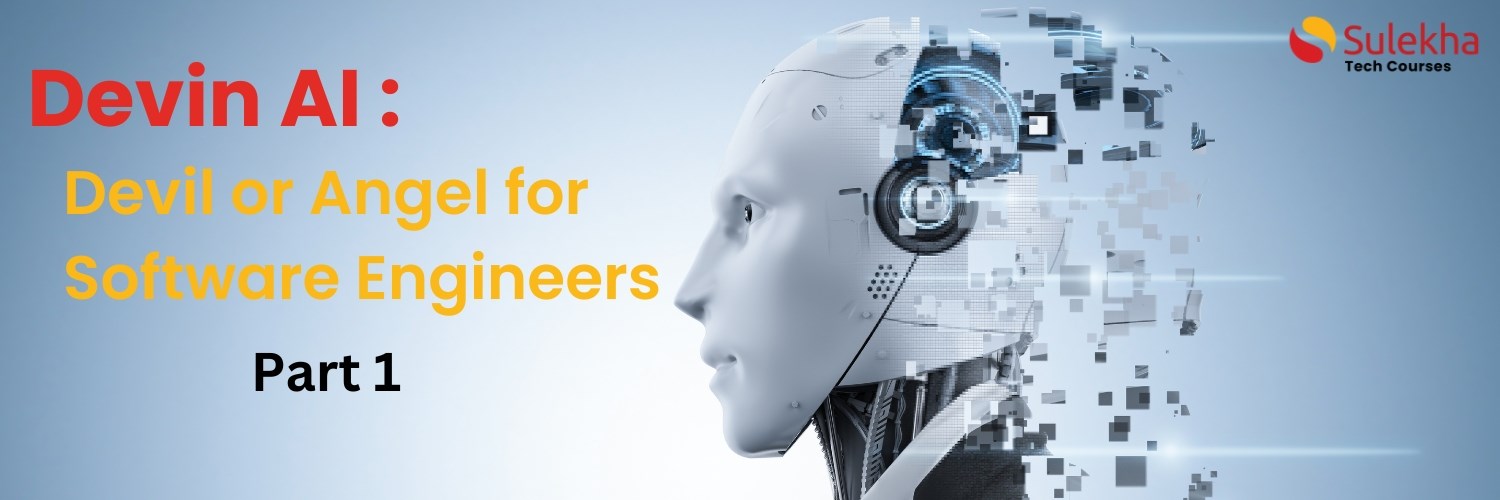
Devin AI - Friend or Foe of Software Developers
In a groundbreaking leap for artificial intelligence, US-based startup Cognition has unveiled Devin AI - an autonomous AI system capable of conceptualizing, designing, and coding software from scratch. This remarkable feat ushers in a new era, blurri
Latest blogs on technology to explore

From Student to AI Pro: What Does Prompt Engineering Entail and How Do You Start?
Explore the growing field of prompt engineering, a vital skill for AI enthusiasts. Learn how to craft optimized prompts for tools like ChatGPT and Gemini, and discover the career opportunities and skills needed to succeed in this fast-evolving indust

How Security Classification Guides Strengthen Data Protection in Modern Cybersecurity
A Security Classification Guide (SCG) defines data protection standards, ensuring sensitive information is handled securely across all levels. By outlining confidentiality, access controls, and declassification procedures, SCGs strengthen cybersecuri

Artificial Intelligence – A Growing Field of Study for Modern Learners
Artificial Intelligence is becoming a top study choice due to high job demand and future scope. This blog explains key subjects, career opportunities, and a simple AI study roadmap to help beginners start learning and build a strong career in the AI

Java in 2026: Why This ‘Old’ Language Is Still Your Golden Ticket to a Tech Career (And Where to Learn It!
Think Java is old news? Think again! 90% of Fortune 500 companies (yes, including Google, Amazon, and Netflix) run on Java (Oracle, 2025). From Android apps to banking systems, Java is the backbone of tech—and Sulekha IT Services is your fast track t

From Student to AI Pro: What Does Prompt Engineering Entail and How Do You Start?
Learn what prompt engineering is, why it matters, and how students and professionals can start mastering AI tools like ChatGPT, Gemini, and Copilot.

Cyber Security in 2025: The Golden Ticket to a Future-Proof Career
Cyber security jobs are growing 35% faster than any other tech field (U.S. Bureau of Labor Statistics, 2024)—and the average salary is $100,000+ per year! In a world where data breaches cost businesses $4.45 million on average (IBM, 2024), cyber secu

SAP SD in 2025: Your Ticket to a High-Flying IT Career
In the fast-paced world of IT and enterprise software, SAP SD (Sales and Distribution) is the secret sauce that keeps businesses running smoothly. Whether it’s managing customer orders, pricing, shipping, or billing, SAP SD is the backbone of sales o

SAP FICO in 2025: Salary, Jobs & How to Get Certified
AP FICO professionals earn $90,000–$130,000/year in the USA and Canada—and demand is skyrocketing! If you’re eyeing a future-proof IT career, SAP FICO (Financial Accounting & Controlling) is your golden ticket. But where do you start? Sulekha IT Serv

Train Like an AI Engineer: The Smartest Career Move You’ll Make This Year!
Why AI Engineering Is the Hottest Skillset Right Now From self-driving cars to chatbots that sound eerily human, Artificial Intelligence is no longer science fiction — it’s the backbone of modern tech. And guess what? Companies across the USA and Can

Confidence Intervals & Hypothesis Tests: The Data Science Path to Generalization
Learn how confidence intervals and hypothesis tests turn sample data into reliable population insights in data science. Understand CLT, p-values, and significance to generalize results, quantify uncertainty, and make evidence-based decisions.